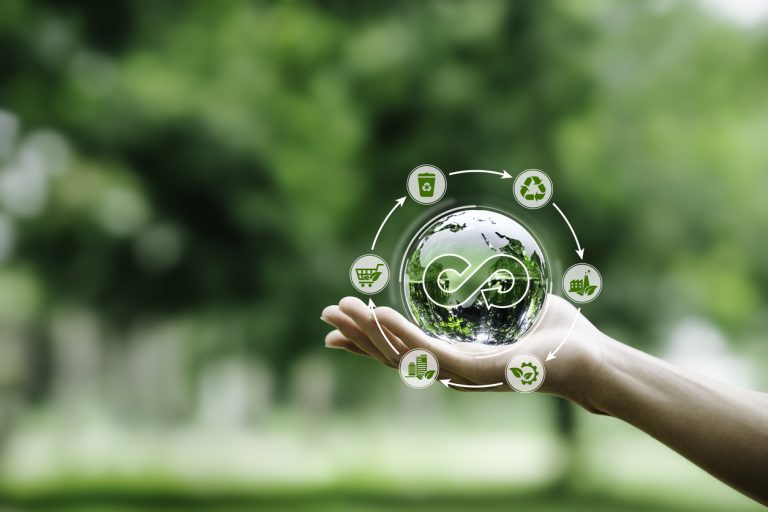The world has gone from 9.1% in circularity to 8.6% in 2020—meaning we are moving backwards. Going circular has the potential to open $4.5 trillion in value, according to the World Business Council’s Sustainable Development report. The European Union is taking steps to become more circular—and it could have an impact on manufacturing companies all around the globe.
Launched in late 2019, the European Green Deal is changing the European Union, with a set of proposals to make climate, energy, transport, and taxation policies for reducing net greenhouse gas emissions by at least 55% by 2030, compared to 1990 levels, and to become the first climate-neutral continent by 2050. It will do this with one third of the €1.8 trillion investment from the NextGenerationEU Recovery Plan, and the EU’s seven-year budget will finance the European Green Deal.
Has it made progress on this goal? The EU’s greenhouse gas emissions fell by 32.5% from 1990 to 2022, while the EU economy grew by around 67% in the same period. In the first half of 2024, half of the EU’s electricity generation came from renewable sources.
One step in becoming more sustainable is the European Union’s new regulation requiring all products sold in the European Union to feature a Digital Product Passport, a framework established in 2024. The Digital Product Passport will include essential details such as product information, compliance documentation, and more. It will also provide user manuals, safety instructions, and guidance on product disposal.
Deloitte suggests a Digital Product Passport is a digital bridge between the consumer, the product, and the brand, a digital carrier on the physical product creating a unique link with the product’s digital identity, and a digital touchpoint enabling new upstream and downstream customer experience.
The goal here is to create more sustainable products and provide transparency across the supply chain—which is no easy feat.
The Challenges of Digital Product Passports
Candidly, if you have spent any time in or around the manufacturing industry, this is a big undertaking. A car, electronic device, or piece of equipment has many pieces and components. Knowing specific details about the materials is challenging to say the least.
The only way we will be able to track all this information is with technology. Sensors can help collect key information in the supply chain and share that information with the brand and the consumer. The need for a trusted digital thread leveraging the IoT (Internet of Things) and AI (artificial intelligence) to track and trace will prove invaluable. We have been talking about digital twins and trusted digital analytics as part of digital transformation to manage assets from cradle to grave. This will quickly create a global supply chain from raw earth metals to global manufacturing.
In my book, Sustainable in a Circular World, I talk about the transition from the make-take-waste model that was successful for many decades to a more circular, sustainable model, which is based on the principles of designing out waste and keeping products and materials in use.
I urge that we are at a crossroads and the only road that will lead to success is the digital one. We must consider the digital feedback loop, and data must play a critical role in how we help regenerate the natural ecosystems. Simply we are talking too much information to do this without technology. Historical data analysis must keep pace with the trends and continue to add necessary contextualized insights. AI now has the opportunity to take this to a whole new level.
The opportunities are always endless with technology. Let’s consider the steps we can take to move to a more circular economy today.
Want to tweet about this article? Use hashtags #IoT #sustainability #AI #5G #cloud #edge #futureofwork #digitaltransformation #green #ecosystem #environmental #circularworld


